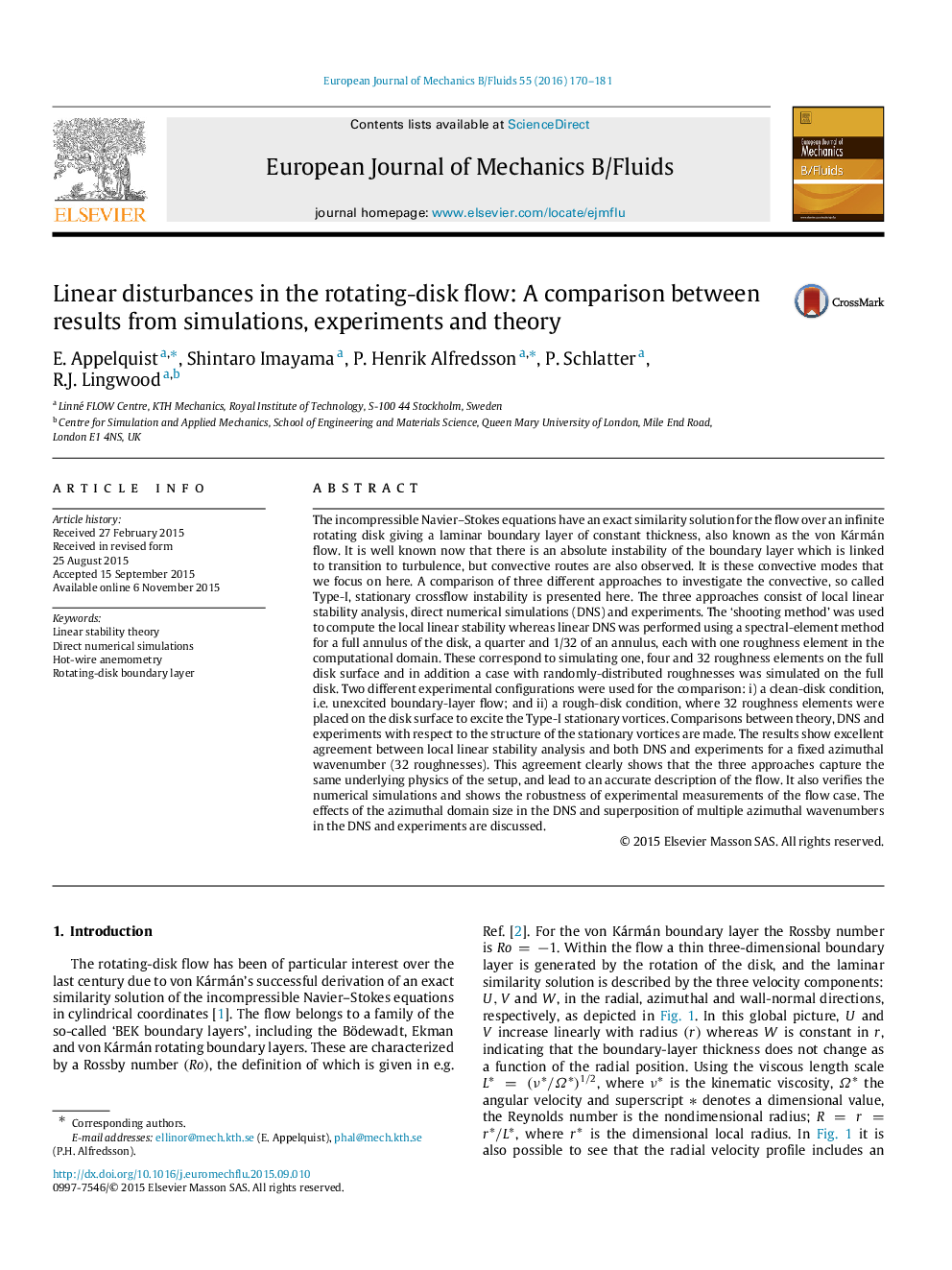| کد مقاله | کد نشریه | سال انتشار | مقاله انگلیسی | نسخه تمام متن |
|---|---|---|---|---|
| 650258 | 1457270 | 2016 | 12 صفحه PDF | دانلود رایگان |
The incompressible Navier–Stokes equations have an exact similarity solution for the flow over an infinite rotating disk giving a laminar boundary layer of constant thickness, also known as the von Kármán flow. It is well known now that there is an absolute instability of the boundary layer which is linked to transition to turbulence, but convective routes are also observed. It is these convective modes that we focus on here. A comparison of three different approaches to investigate the convective, so called Type-I, stationary crossflow instability is presented here. The three approaches consist of local linear stability analysis, direct numerical simulations (DNS) and experiments. The ‘shooting method’ was used to compute the local linear stability whereas linear DNS was performed using a spectral-element method for a full annulus of the disk, a quarter and 1/32 of an annulus, each with one roughness element in the computational domain. These correspond to simulating one, four and 32 roughness elements on the full disk surface and in addition a case with randomly-distributed roughnesses was simulated on the full disk. Two different experimental configurations were used for the comparison: i) a clean-disk condition, i.e. unexcited boundary-layer flow; and ii) a rough-disk condition, where 32 roughness elements were placed on the disk surface to excite the Type-I stationary vortices. Comparisons between theory, DNS and experiments with respect to the structure of the stationary vortices are made. The results show excellent agreement between local linear stability analysis and both DNS and experiments for a fixed azimuthal wavenumber (32 roughnesses). This agreement clearly shows that the three approaches capture the same underlying physics of the setup, and lead to an accurate description of the flow. It also verifies the numerical simulations and shows the robustness of experimental measurements of the flow case. The effects of the azimuthal domain size in the DNS and superposition of multiple azimuthal wavenumbers in the DNS and experiments are discussed.
Journal: European Journal of Mechanics - B/Fluids - Volume 55, Part 1, January–February 2016, Pages 170–181
